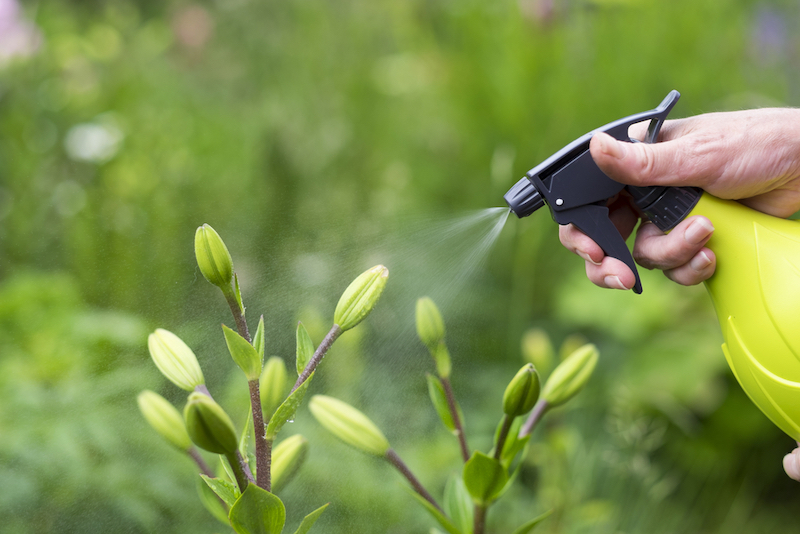Caterpillars, worms and other insects often like to much on your plants for a snack. But rather than just sitting by and letting them have their fill, take matters into your own hands and learn the best methods for pest prevention.
Insect Pests
Q: Every year at this time, my petunias and geraniums get a tiny worm that eats the blossoms. Unfortunately, the worm keeps growing and gets larger. I have sprayed the plants with insect killer but to no avail. I pick off the worms when I can see them. It’s hard to see them when they are small. What can I do?
A: Most insect pests are specific to just a few types of plants, but I don’t know of any caterpillars that are specific to these two flowers. There are many species of moths, butterflies and even a few flies that start out as caterpillars, so there may be two different kinds affecting your plants.
There are field guidebooks that are useful in identifying the caterpillar stage of these insects. Or, you can cover a plant that has a caterpillar on it, wait until it hatches from its cocoon, and then use a field guide to identify the adult.
Besides the curiosity factor, one of the reasons we want to identify the type of pest on a plant is to choose the safest method of dealing with it. There are many sawfly pests that eat plants, and they have a life cycle stage where they look like a caterpillar. The safest spray for moth and butterfly caterpillar pests is Bacillus thuringiensis israelensis, or Bti. This is a bacterial insecticide that only affects the caterpillars of moths and butterflies, so it is very safe, but it is ineffective against the caterpillar stage of sawflies. The downside of the spray is that it could affect beneficial or benign insects.
Picking the caterpillars off when they are large enough to see may not prevent some plant damage, but it is even safer than any spray.
If the insecticide is supposed to get the leaf wet and then be eaten by the caterpillar, you will need to spray the leaves until they are shiny wet. A repeat spraying about a week later may help. If the insecticide is supposed to come into contact with the caterpillar, then you need to spray into the dense areas of leaves, including the bottoms. Very often, caterpillars and many other insects are on the bottom.
Q: My mother had a blue flowering geranium in her perennial garden, but when I have tried to find one, the salesmen say there isn’t such a thing. What kind of flower could it be?
A: Well, in this case, you are both right. The geranium family has many species. The plants that are commonly sold as geraniums are not in the geranium genus.
The common Zonal geraniums are named after the leaf pattern that has several bands of different shades of green or white. They are in the genus Pelargonium, which is based on the Greek word for “stork.” There are hundreds of varieties, and they come in all shades of red, pink and white, as well as many two-toned flowers.
There are several species of geraniums in the genus Geranium. The word is derived from the Greek word for the crane bird. Both genera are named after birds with rounded heads and long beaks. If you look at a ripening seedpod on plants in the geranium family, you will see the round part where the seeds are developing and the long beak part that splits open and allows the seeds to emerge.
The true geraniums are native to North America. They come in several shades of blue and purple and bloom from April to June. Growing from 1 to 2 feet high, they are native to dry and medium-wet woodland areas. They are perennials that only bloom for a short time compared with Zonal geraniums. Actually, Zonal geraniums are perennials, too, but they are usually grown as annuals. Head back to the nursery and ask to look at native perennial geraniums.
Save or share this infographic for reference: Insect Pests

Email questions to Jeff Rugg at [email protected]. To find out more about Jeff Rugg and read features by other Creators Syndicate writers and cartoonists, visit the Creators Syndicate website at www.creators.com.
COPYRIGHT 2017 JEFF RUGG
DISTRIBUTED BY CREATORS SYNDICATE



